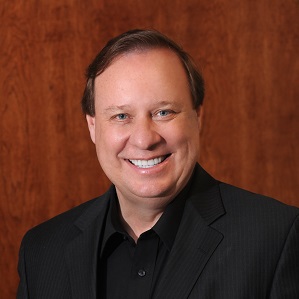Evan Leybourn, Doug Kirkpatrick
March 4, 2018
Evan Leybourn, Doug Kirkpatrick
March 4, 2018
 Interview by Isabella Serg
Interview by Isabella Serg
The traditional hierarchical model of management can be a heavy burden on an organization.
As Gary Hamel points out: “In an operating bureaucracy, strategy gets set at the top. Power trickles down. Big leaders appoint little leaders. Individuals compete for promotion. Compensation correlates with rank. Tasks are assigned. Managers assess performance. Rules tightly circumscribe discretion.” All of this gradually takes it toll on economic productivity and organizational resilience.
Recent examples of organizations such as Microsoft and Ericsson demonstrate the real-cost to organizations if they do not learn to act entrepreneurially and innovate systematically at scale.
There are a number of different approaches to creating greater autonomy, freedom and accountability that expand individuals’ ability to provide leadership and innovation. I sat down with Doug Kirkpatrick to explore how The Morning Star Company (Morning Star), the world’s largest processor of tomatoes, unlocked freedom and accountability using principles of self-management to give workers their brains back.
Moving on from command-and-control
According to the Self-Management Institute, self-management is an alternative to the traditional, command-and-control method of organizing most often visible in modern organizations. The key ideas central to the self-management philosophy include:
Doug Kirkpatrick, who spent the first half of his business career at Morning Star and is now an author, consultant, TEDx speaker and coach on self-management and organizational change reflects: “One day, our founder had an epiphany. Each one of those Morning Star workers was a manager in his or her personal life. People were taking out a mortgage, they were raising children, they were buying cars, they were involved in civic organizations. If people know what to do at work and how to do it, they should be able to manage themselves at work”.
When people join Morning Star, they are asked to embrace two core principles. First, workers should not use force against others — all interactions should be voluntary. Second, workers should honor the commitments they make to others.
In addition to the obvious benefit these principles to workers of increased happiness and engagement, the benefits to the organization have been pretty good too.
Following the introduction of self-management, Morning Star realized greater transparency, increased collaboration between workers and fewer costs, enabling the company to focus on customers’ very highest priorities.
Effective management starts with self-management
In 2008, Doug co-founded the Morning Star Self-Management Institute with Morning Star founder Chris Rufer and colleague Paul Green, Jr. to promulgate the principles of self-management for both internal colleagues and external organizations.
According to Doug, “Self-management works well when you have people who are mature, articulate, have a high degree of social and emotional intelligence and are committed to the mission and vision of the enterprise.”
Self-management is founded in a belief that people are naturally going to work together and form teams. Believe or not, Morning Star doesn’t concoct teams; people largely self-organize into teams that work for them.
“An analogy [for self-management] would be a cloud – when condensation conditions are right, water molecules form a cloud”, says Doug. “When conditions change, the cloud dissipates and the molecules reform and reconfigure in a way they’re needed in the future.”
Morning Star does have some logical groupings of people who work together by necessity because of what they do and where they work. For instance, every functional area has its own profit and loss statement and is considered a business unit. This give people a sense of their costs as well as the value they are providing to other business units in the enterprise. In this sense, economic thinking promotes a sense of accountability, ownership and numerical literacy.
Self-management doesn’t work for all organizations however.
Says Doug, “You have to be careful you don’t just drop self-management into an organization because it does depend [on various success factors].”
“If you have a workforce where people lack initiative, they are bullies or power mongers or just like to exercise command-authority, those environments don’t work well with self-management.”
“The same goes if the culture lacks trust, the staff are co-dependent and lack social intelligence or the organization is riddled with bitter, back-biting politics.”
Management can support workers experiencing self-management similar in a way similar to how NASA allows people to experience temporary weightlessness, by introducing social technologies like Open Space or World Café.
“You also have to take the temperature to see what you’re dealing with”, says Doug. “You can do that through an organizational audit or assessment or survey.”
“At the end of the day, having people coach, facilitate and mentor others through the change is really crucial to having a successful outcome”.
Please subscribe and become a member to access the entire Business Agility Library without restriction.